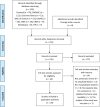Efficacy and safety of non-pharmacological interventions for neonatal pain: an overview of systematic reviews
- PMID: 36171044
- PMCID: PMC9528682
- DOI: 10.1136/bmjopen-2022-062296
Efficacy and safety of non-pharmacological interventions for neonatal pain: an overview of systematic reviews
Abstract
Objectives: To synthesise current evidence from systematic reviews (SRs) regarding the efficacy and safety of non-pharmacological interventions to prevent and treat pain in newborn infants.
Design: Overview of SRs.
Data sources: We searched PubMed, Embase, Cochrane Library, Web of Science, CINAHL, Chinese National Knowledge Infrastructure (CNKI), Chinese Biomedical Literature Database (CBM), Wanfang Database, Chinese Science and Technology Periodical Database (VIP) and Google Scholar to identify all relevant SRs published in the last 5 years.
Eligibility criteria for selecting studies: We included SRs that evaluated the efficacy and safety of non-pharmacological interventions for neonatal pain.
Data extraction and synthesis: Two reviewers independently extracted the data, assessed the methodological quality using a Measurement Tool to Assess Systematic Reviews (AMSTAR) 2 and graded the evidence quality with the Grading of Recommendations Assessment, Development and Evaluation (GRADE).
Results: A total of 29 SRs were included in this overview, of which 28 focused on procedural pain and only 1 focused on postoperative pain. Based on AMSTAR 2, seven reviews were found to be of 'high quality', eight of 'moderate quality', five of 'low quality' and nine of 'critically low quality'. The GRADE results suggested that facilitated tucking, kangaroo care, sweet solutions, familiar odour or combined non-pharmacological interventions, such as a combination of sucrose and non-nutritive sucking, were effective and safe in reducing pain from medical procedures in neonates. However, sucrose alone was less effective than local anaesthesia or a combination of the two during circumcision.
Conclusions: Facilitated tucking, small volumes of sweet solutions, kangaroo care and familiar odour were recommended. Scientific implementation strategies should be developed to promote the clinical use of these effective non-pharmacological interventions. Meanwhile, further rigorous trials and SRs are needed to identify the best non-pharmacological approaches for pain from common surgery and illnesses in neonates.
Prospero registration number: CRD42021292583.
Keywords: NEONATOLOGY; Neonatal intensive & critical care; PAIN MANAGEMENT.
© Author(s) (or their employer(s)) 2022. Re-use permitted under CC BY-NC. No commercial re-use. See rights and permissions. Published by BMJ.
Figures



Similar articles
-
Effectiveness and Safety of Acupuncture for Migraine: An Overview of Systematic Reviews.Pain Res Manag. 2020 Mar 23;2020:3825617. doi: 10.1155/2020/3825617. eCollection 2020. Pain Res Manag. 2020. PMID: 32269669 Free PMC article. Review.
-
The future of Cochrane Neonatal.Early Hum Dev. 2020 Nov;150:105191. doi: 10.1016/j.earlhumdev.2020.105191. Epub 2020 Sep 12. Early Hum Dev. 2020. PMID: 33036834
-
Beyond the black stump: rapid reviews of health research issues affecting regional, rural and remote Australia.Med J Aust. 2020 Dec;213 Suppl 11:S3-S32.e1. doi: 10.5694/mja2.50881. Med J Aust. 2020. PMID: 33314144
-
Evaluation of traditional Chinese exercise for knee osteoarthritis (KOA): an overview of systematic reviews.Syst Rev. 2024 Jul 18;13(1):187. doi: 10.1186/s13643-024-02606-0. Syst Rev. 2024. PMID: 39026375 Free PMC article. Review.
-
Methodology and Reporting Quality Evaluation of Acupuncture for Mild Cognitive Impairment: An Overview of Systematic Reviews.Evid Based Complement Alternat Med. 2020 Aug 5;2020:7908067. doi: 10.1155/2020/7908067. eCollection 2020. Evid Based Complement Alternat Med. 2020. PMID: 32831880 Free PMC article. Review.
Cited by
-
Pain management in preterm infants with necrotizing enterocolitis: an international expert consensus statement.Eur J Pediatr. 2025 May 14;184(6):342. doi: 10.1007/s00431-025-06168-8. Eur J Pediatr. 2025. PMID: 40369136 Free PMC article.
-
Dexmedetomidine: An Alternative to Pain Treatment in Neonatology.Children (Basel). 2023 Feb 25;10(3):454. doi: 10.3390/children10030454. Children (Basel). 2023. PMID: 36980013 Free PMC article. Review.
-
[Evidence-based guideline for neonatal pain management in China (2023)].Zhongguo Dang Dai Er Ke Za Zhi. 2023 Feb 15;25(2):109-127. doi: 10.7499/j.issn.1008-8830.2210052. Zhongguo Dang Dai Er Ke Za Zhi. 2023. PMID: 36854686 Free PMC article. Chinese.
-
Barriers and facilitators to using procedural pain treatments in pediatric patients (under 1 year old): protocol for a mixed studies systematic review with a narrative synthesis.Syst Rev. 2024 Nov 26;13(1):287. doi: 10.1186/s13643-024-02713-y. Syst Rev. 2024. PMID: 39593168 Free PMC article.
-
From vulnerability to resilience: unraveling the role of oxidative stress in preterm brain injury.Ital J Pediatr. 2025 Jul 15;51(1):232. doi: 10.1186/s13052-025-02079-4. Ital J Pediatr. 2025. PMID: 40660362 Free PMC article. Review.
References
-
- Xu L, Ren HY, Cao XM. Epidemiology of painful procedures in premature and influencing factors in the intensive care unit. Chin Pediatr Emerg Med 2018;25:824–8. 10.3760/cma.j.issn.1673-4912.2018.11.005 - DOI
Publication types
MeSH terms
Substances
LinkOut - more resources
Full Text Sources
Medical
